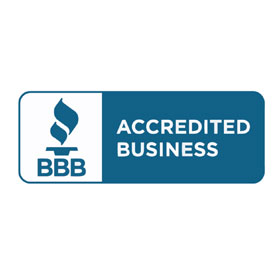


Maintenance Plans
When your air conditioning unit breaks down or needs to be replaced, you know that you can count on Air Masters of Tampa to get you back up and running with friendly service and a fair price. But here's an even better idea: head off problems by investing in a maintenance plan to keep your AC and heating system performing at its peak all year long. With regular maintenance, your equipment will last longer, perform better, and operate more efficiently, substantially lowering your utility bills.

You've Got Options
Platinum
- Twice a year maintenance for UV clients
- 10% discount on repair ticket
- VIP priority
- No overtime charges
- 3 years parts & labor warranty
- Drain line guaranteed
- (1) UV light replacement bulb annually
- (1) Duct sanitizing service annually
- Monthly payment plan available
Gold
- Twice a year maintenance visits
- 10% discount on repair ticket
- VIP priority
- No overtime charges
- 3 years parts & labor warranty
- Drain line guaranteed
- Monthly payment plan available
Silver
- Twice a year maintenance
- 10% discount on repair ticket
- VIP priority
- No overtime charges
- 2 years parts & labor warranty
- Drain line guaranteed for ninety (90) days
- Monthly payment plan available
Bronze
- Once a year maintenance
- 10% discount on repair ticket
- Standard priority
- Drain line guaranteed for 30 days
What's Included in a Maintenance Visit?
The process starts with a call from an Air Masters customer service representative to confirm that you are home and to report the approximate arrival time of the technician. When the technician comes to your home, he will be in uniform to identify himself and our company. He then will ask for the location of the equipment and if you are having any particular problem that he can look at during the inspection.
- Our technician sets the thermostat on cooling or heating, depending on the mode of operation needed to check out system running conditions.
- He will check return air filter or filters in the return air duct design. If they are clogged, he cannot get the proper readings needed to diagnose the system.
- He will wash out the outside condenser coil with a garden hose. This is done because dirt and grass clippings accumulate on the coil causing blockage to airflow and shorting the life of your equipment.
- He will disassemble the outside unit, checking wiring, capacitors, contactors, connections for wear and tear and the all-around condition of the unit, including rusting and oil spots that could identify the early stages of a problem.
- After he puts the unit back together, he checks the outside disconnect for burnt wiring and poor electrical connections.
- The technician then goes to the inside unit and checks the condition of the evaporator coil and drain pan for a dirty coil that might have algae build up on it or mold. He also looks for those same conditions in the drain pan. The reason: in Florida, we have very high humidity and with the cold temperature of the evaporator coil making moisture (condensate), it lends itself to producing mold. This can cause allergies, eye irritation, and possible asthma attacks. The technician then cleans out the drain line and adds algaecide tablets to the drain pan to reduce the chance of algae clogging up your unit.
- While the unit is open, he also checks the wiring, capacitor, relays, and contactors. He makes sure the blower wheel is clean to enhance air flow and maximize the life of your equipment. He then looks for any rusting and oil spots that could signal the first sign of a problem.
- After he puts the unit back together, he checks the inside disconnect for burnt wiring and poor electrical connections.
- Now that both sections are together and there isn't anything that he knows of restricting air flow, he can check the operation of the air conditioning and heating system.
- He then checks the amperages of the compressor and fan motors, the auxiliary heat strip of a heat pump, the heat strips of a straight cool with electric heat. With gas furnaces, he checks the ignition, burner, flame, controls, and safety controls. With oil-fired furnaces, he checks the oil filter, oil pump ignition, flame, controls, and safety controls.
- When the unit has stabilized, he checks refrigerant pressures based on refrigerant charts that show what the pressures should be depending on the metering device. With expansion valves, he uses the sub cooling method, and with flow control orifices, he uses the super heat method.
- Once the unit has been diagnosed, a report is filled out with relevant items checked and a recommendation of what would be needed to bring it to proper operating condition and optimum energy efficiency.






